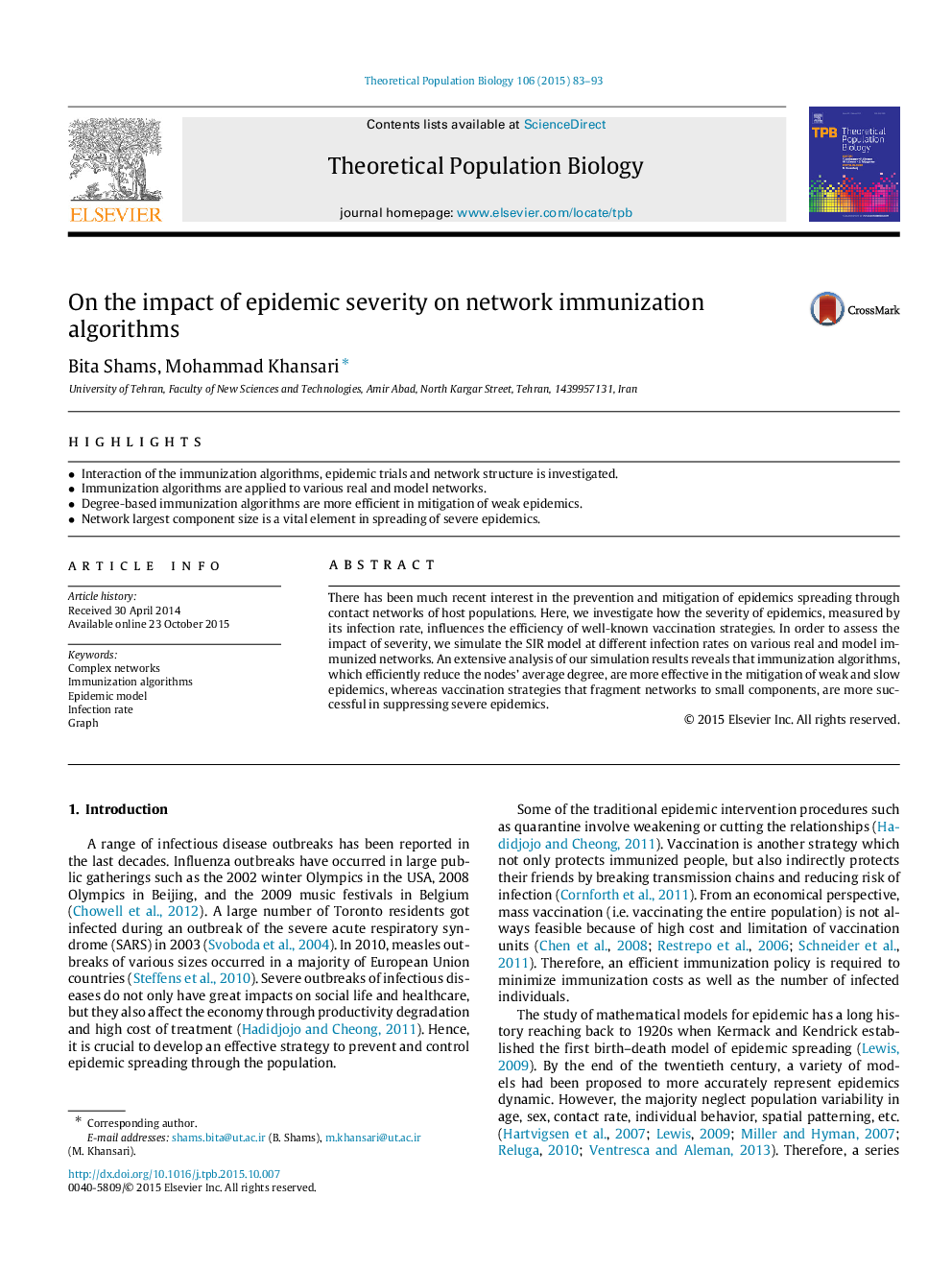| Article ID | Journal | Published Year | Pages | File Type |
|---|---|---|---|---|
| 4502311 | Theoretical Population Biology | 2015 | 11 Pages |
•Interaction of the immunization algorithms, epidemic trials and network structure is investigated.•Immunization algorithms are applied to various real and model networks.•Degree-based immunization algorithms are more efficient in mitigation of weak epidemics.•Network largest component size is a vital element in spreading of severe epidemics.
There has been much recent interest in the prevention and mitigation of epidemics spreading through contact networks of host populations. Here, we investigate how the severity of epidemics, measured by its infection rate, influences the efficiency of well-known vaccination strategies. In order to assess the impact of severity, we simulate the SIR model at different infection rates on various real and model immunized networks. An extensive analysis of our simulation results reveals that immunization algorithms, which efficiently reduce the nodes’ average degree, are more effective in the mitigation of weak and slow epidemics, whereas vaccination strategies that fragment networks to small components, are more successful in suppressing severe epidemics.
